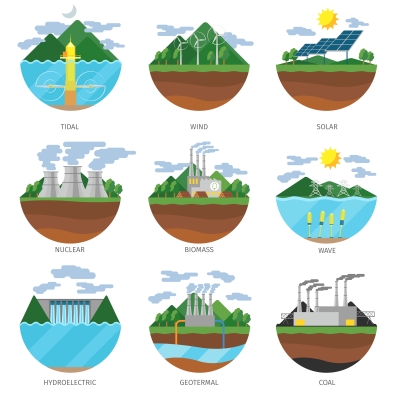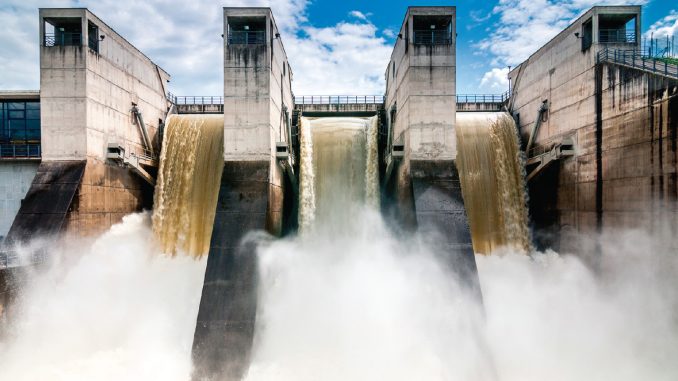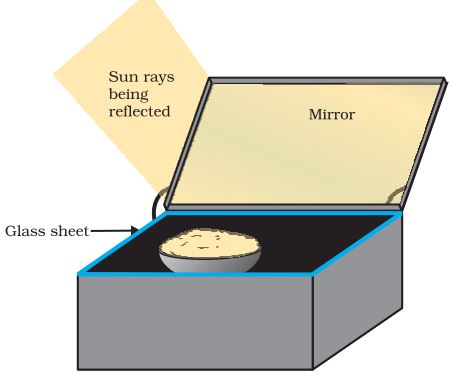Class 10 Notes Sources of Energy
Class 10
Welcome to this article on "Class 10 Notes Sources of Energy" for Class 10 students. In this article, we will explore the various sources of energy that power our world and how they impact the environment. We will also discuss the advantages and disadvantages of different sources of energy, and the importance of finding sustainable solutions to meet our energy needs. With this knowledge, you will be able to understand the role of energy in our daily lives and how we can make responsible choices to ensure a better future for ourselves and the planet. Let's dive in!
Sources of Energy
An energy source capable of providing enough useful energy at a steady rate over a long period of time.
A good source of energy should:
- Require highly trained engineers to operate and use safely and conveniently, such as nuclear energy, which cannot be used for household purposes.
- Be easy to transport from production to consumers, such as coal, petrol, diesel, and LPG.
- Be easy to store, such as petrol, diesel, and LPG that require huge storage tanks.
Characteristics of a good fuel include:
- High calorific value
- Low smoke
- Low residue after burning
- Easy availability
- Inexpensive
- Easy to store and transport
The sources of energy can be classified into two categories:
- Renewable sources of energy
- Non-renewable sources of energy
Renewable sources of energy -Class 10 Notes Sources of Energy
Inexhaustible sources of energy are those that we can replace as we use them, and they can be used repeatedly to produce energy. These sources are available in unlimited amounts in nature and can develop within a relatively short period of time.
Examples of renewable sources of energy include:
- Solar energy
- Wind energy
- Water energy (hydro-energy)
- Geothermal energy
- Ocean energy
- Biomass energy (firewood, animal dung, and biodegradable waste from cities and crop residues)
Advantages of renewable sources of energy:
- These sources will last as long as the sun continues to shine on Earth.
- These sources are freely available in nature.
- These sources do not cause any pollution.
Non-Renewable Source of Energy- Class 10 Notes Sources of Energy
Exhaustible sources of energy are non-renewable sources that cannot be replaced once they have been used. These sources have been accumulated in nature over millions of years.
Examples of non-renewable sources of energy include:
- Coal
- Oil
- Natural gas
- These fuels are known as fossil fuels.
Disadvantages of non-renewable sources of energy:
- Due to their extensive use, these sources are rapidly depleting.
- It is challenging to discover and exploit new deposits of these sources.
- These sources are a significant cause of environmental pollution.
Fossil Fuel
Fossil fuels form from the remains of prehistoric plants and animals that were buried deep within the Earth millions of years ago due to natural processes. These non-renewable sources of energy are responsible for environmental problems due to pollution.
During the formation of fossil fuels, an entire organism or its parts often get buried in sand or mud, decay, and disintegrate, leaving no signs of their existence. The harder parts of organisms settle down after death, are covered by sediments, and subjected to extreme pressure and temperature. The Earth then converts them into fossil fuels through a process called fossilization.
Disadvantages of fossil fuels include:
- Fossil fuels are non-renewable sources of energy and cannot be replenished once used.
- Burning of fossil fuels causes air pollution.
- The reserves of fossil fuels on Earth are limited and may be exhausted soon.
Thermal Power Plants -Class 10 Notes Sources of Energy
Electricity generation occurs through the combustion of coal and petroleum, for example, using fossil fuels. Thermal electricity production uses coal, petroleum, and natural gas. Electricity transmission is highly efficient. The turbine is turned by the steam generated from burning fossil fuels to produce electricity.
Class 10 Notes Sources of Energy -Sources of energy are classified into two categories:
(i) Conventional Sources of Energy, extensively used to meet a large portion of our energy needs, include: (a) Fossil fuels (coal, oil, and natural gas) (b) Hydro energy (energy from water flowing in rivers) Biomass energy and wind energy also fall under this category as they have been used since ancient times.
(ii) Non-conventional Sources of Energy, which are not used as extensively as conventional sources and meet our energy requirements on a limited scale. This category includes solar energy, ocean energy (tidal energy, wave energy, ocean thermal energy), geothermal energy, and nuclear energy. These sources of energy have been tapped using advances in technology to meet our growing energy needs and are also known as alternative sources of energy.
Examples of renewable sources of energy
1. Solar Energy :
Solar energy is the energy produced by the sun in the form of heat and light. Solar radiations have the ability to convert into electricity through the use of solar cells or photovoltaic cells. Silicon solar cells directly convert solar radiations into electricity. These cells are arranged on large flat sheets to form a mirror solar panel. Solar cookers, on the other hand, are designed with a large glass plate and are painted black from the outside to trap solar radiation by the greenhouse effect.
Solar Cooker
Solar cookers have several advantages, such as being eco-friendly, renewable, and useful in rural areas. They also retain all the nutrients in food due to slow cooking. However, there are some disadvantages to using solar cookers, including the high cost of silicon cells and the fact that solar radiations are not uniform over the Earth's surface. Solar cookers also cannot be used at night or on cloudy days, and they cannot be used to make chapattis for frying, as these require a temperature of 140°C or more, while a solar cooker can only achieve a maximum temperature of 100°C. Other solar devices include solar water heaters and solar furnaces
2. Wind Energy:
Large masses of air moving from one place to another is called wind, and this movement is associated with kinetic energy known as wind energy. This energy can be transformed into mechanical and electrical energy.
.jpg)
Windmills utilize the kinetic energy of wind to lift water, grind grains and for other mechanical purposes. Sale boats, engine fewer airplanes or gilders also use wind energy for propulsion.
Class 10 Notes Sources of Energy -The benefits of wind energy are that it is eco-friendly and renewable. However, it has some limitations like non-uniform wind speed, the need for a large area to erect a series of windmills, and high initial investment with a comparatively low output.
3. Hydro Power Plant (hydro energy)
The process of storing water flowing in a river in a high-rise dam and allowing it to fall from the top of the dam to generate electricity through large water turbines is referred to as hydroelectricity or hydel power. The turbines are connected to electric generators to produce electric current. This process involves the transfer of potential energy of the water into kinetic energy and then into electric energy.
Hydroelectricity is a conventional renewable energy source obtained from water falling from a great height. It is a clean and non-polluting source of energy. Dams are constructed to collect water flowing in high-altitude rivers, and the stored water has a lot of potential energy. When the water is allowed to fall from a height, potential energy changes to kinetic energy which rotates the turbines to produce electricity.

Advantages of Hydro Power Plant:
- Hydroelectricity is readily and abundantly available everywhere free of cost.
- It is eco-friendly and does not produce any kind of environmental pollution.
- It is a renewable source as water itself is a renewable and inexhaustible resource.
- It is a cheap source of energy, as it does not involve any costly investment.
Disadvantages of Hydro Power Plant:
- The construction of hydro power plants is highly expensive.
- Dams cannot be constructed on all river sites.
- Large areas of human habitation and agriculture fields get submerged.
- People face social and environmental problems.
4. Geothermal Energy
Geothermal energy is the naturally occurring thermal energy found within rock formations and fluids held within those formations. It is harnessed from the heat of the Earth. The heat of the Earth melts rocks and forms magma, which contains hot gases. Magma collects at some depths below the Earth’s surface in areas known as ‘Hot spots’. When underground water meets these hot spots, it turns into steam that can be utilized to generate electricity.
Advantages of Geothermal Energy
It is a renewable source of energy. It is relatively inexpensive compared to other forms of energy. It is a clean and non-polluting source of energy.
Disadvantages of Geothermal Energy
Only a few suitable sites are available for harnessing energy. The cost of building geothermal power plants can be high.
5. Ocean Energy
The oceans cover almost 71% of the Earth's surface and not only act as a large collector of solar heat energy, but also store it due to their high specific heat. Therefore, ocean water can be used as a renewable resource of energy. The different forms of ocean energy are as follows:
(i) Ocean Thermal Energy: The temperature difference between the deeper levels and surface of an ocean provides energy known as Ocean Thermal Energy.
(ii) Ocean Tidal Energy: The movement of water due to high and low tides provides a large amount of energy known as Ocean Tidal Energy, which can be harnessed by constructing a tidal barrage or dam.
(iii) Sea Wave Energy: The kinetic energy associated with high-speed sea waves can be used to generate electricity through dynamos.
(iv) Energy from Nuclear Deuterium of Oceans: The oceans contain deuterium, a heavy hydrogen isotope, which can be used for controlled nuclear fission to produce energy.
(v) Energy From Salinity Gradient in Seas: The difference in salt concentration between two or more seas can be used to generate energy with suitable techniques.
(vi) Energy From Sea Vegetation or Biomass: The enormous amount of seaweeds present in the sea water provides an endless supply of methane fuel.
A disadvantage of ocean energy is the lack of uniform tidal action
6. Bio-Mass
Biomass, a renewable source of energy, refers to living matter or its residue. It includes new plant growth, agriculture and forest residues (such as bio-gases, bark, sawdust, wood shavings, roots, animal droppings, etc.), carbonaceous wastes (like sewage, garbage, night soil, etc.), and biodegradable organic effluent from industries. Conventional fuels like cow dung cakes, firewood, coal, and charcoal are also derived from biomass.
Bio-gas, a mixture of gases produced during the decomposition of biomass in the absence of oxygen (anaerobic respiration), is a major component of biomass. Methane is the primary constituent of bio-gas. Bio-gas plants use animal dung, sewage, crop residues, vegetable wastes, poultry droppings, etc., to produce bio-gas.
Advantages of Bio-gas:
- A bio-gas plant is easy to construct in rural areas and can supply bio-gas for 6 hours daily for cooking purposes using dung from 3 to 4 cattle heads.
- Bio-gas is a clean fuel that burns without smoke and leaves no ash.
- Ethane, the primary constituent of bio-gas, has a higher calorific value (55 kj/g) than petrol (50kj/g).
- The spent slurry, which is rich in nitrogen and phosphorus, is an excellent manure.
- Bio-gas saves firewood and reduces deforestation.
Bio-gas is mainly composed of methane (up to 75%), carbon dioxide (25%), and traces of other gases such as nitrogen and hydrogen. Methane is a high-value calorific fuel, while carbon dioxide is an inert gas.
Nuclear energy is the result of a reaction in which the nucleus of an atom undergoes a change to form a new atom and releases an enormous amount of energy. There are two distinct ways to obtain nuclear energy: (a) Nuclear fission and (b) Nuclear fusion. Nuclear energy is used for heat generation and as fuel for marine vessels.
Advantages of Nuclear Energy:
- It is an alternative source of energy due to depletion of fossil fuels.
- A large amount of energy can be released from a small amount of fuel.
Disadvantages of Nuclear Energy:
- Risk of nuclear waste leakage.
- High cost of setting up a nuclear plant.
- Pollution of the environment.
Increasing demand for energy has several environmental consequences:
- Combustion of fossil fuels produces acid rain and damages plants, soil, and aquatic life.
- Burning of fossil fuels increases the amount of greenhouse gas, carbon dioxide, in the atmosphere.
- Construction of hydropower plants disrupts ecological balance.
- Nuclear power plants increase radioactivity in the environment.
Difference between Nuclear Fission and Fusion
| Aspect | Nuclear Fission | Nuclear Fusion |
|---|---|---|
| Definition | A nuclear reaction in which a heavy nucleus is split into two or more smaller nuclei and releases a large amount of energy. | A nuclear reaction in which two or more light nuclei combine to form a heavier nucleus and release a huge amount of energy. |
| Type of reaction | Splitting of heavy nucleus | Combination of light nuclei |
| Energy release | Huge amount of energy is released, in the form of kinetic energy of the fission fragments and also in the form of radiation. | Huge amount of energy is released, in the form of kinetic energy of the fusion products and also in the form of radiation. |
| Nature of fuel | Fission requires heavy elements such as Uranium-235, Plutonium-239, etc. | Fusion requires light elements such as Hydrogen-2 (Deuterium), Hydrogen-3 (Tritium), etc. |
| Conditions required | Fission can occur at room temperature and pressure, but to sustain it, high-speed neutrons are required, and a chain reaction is necessary. | Fusion requires extremely high temperature and pressure, typically millions of degrees Celsius, to overcome the repulsive forces between the positively charged nuclei. |
| Applications | Nuclear power plants generate electricity using fission reactions. Also, nuclear weapons are based on fission. | Currently, fusion is not yet a viable energy source due to the technical challenges of achieving the required conditions. However, research is ongoing to develop fusion reactors as a clean, safe, and abundant source of energy in the future. |
Conventional Sources of Energy
Energy is the ability of a body to do work, and it is required in all walks of life. A good source of energy should have certain characteristics such as the ability to do a large amount of work for each unit of mass or volume, easy accessibility, transportation, and be economical.
Conventional sources of energy are those that have been in use for a long time. Coal, petroleum, natural gas, hydel energy, wind energy, and nuclear energy are examples of conventional sources of energy. Firewood is also a conventional source of energy, but its usage is now limited to rural Indian kitchens.
Non-conventional Sources of Energy
Energy is required in all walks of life as it is the ability of a body to do work. Conventional sources of energy, such as coal, petroleum, natural gas, hydel energy, wind energy, and nuclear energy, have been in use for a long time. However, energy sources that are relatively new are called non-conventional sources of energy, including nuclear power and solar energy.
The sun is the primary source of energy for all living beings on earth, and technologies for harnessing solar energy have been developed in recent times. Solar cookers are designed using plain mirrors placed inside a rectangular box to generate heat for cooking food. Similarly, solar furnaces are designed as concave mirrors with many smaller mirrors to create a large convex mirror to heat objects placed near the focus. Solar cells made from silicon convert solar energy into electrical energy, which is stored in a battery for later use. However, the cost-benefit ratio for using solar energy is not conducive and is exorbitantly costly.
Tidal Energy
Tidal energy can be generated by collecting water from dams built near seashores during high tide and utilizing the flow of water during low tide to generate electricity. Waves can also be a good source of energy, and devices such as hollow towers are being designed and tested to produce wave energy. Ocean thermal energy utilizes the temperature differential between the hot water at the sea surface and the cold water at a lower level to generate energy. Geothermal energy, which is heat energy from molten rocks present inside the earth, is the only type of energy that does not use solar energy.
Nuclear power plants
Nuclear power plants utilize the process of nuclear fission, which is the process during which a bigger nucleus breaks to produce two smaller nuclei and generates a massive amount of energy. Although nuclear power is safe for the environment, the risk of damage due to accidental leaks of radiation is high, and the storage of nuclear waste is a significant problem due to the potential risk of radiation involved.
Conclusion
In conclusion, as we have seen throughout this article, Class 10 Notes Sources of Energy cover a vast range of topics related to the sources of energy that power our world. We have explored the different types of energy sources and their advantages and disadvantages, as well as the need for sustainable solutions to meet our energy needs. By understanding the importance of energy in our daily lives and the impact it has on the environment, we can make responsible choices that help us achieve a better future for ourselves and the planet. So, let's continue to learn, explore and innovate to ensure that Class 10 Notes Sources of Energy remain relevant and valuable to our lives and the world around us.
Class 10 Notes Sources of Energy
Download the eSaral App for complete Class 10 Video lectures, Study material, revision and much more.

